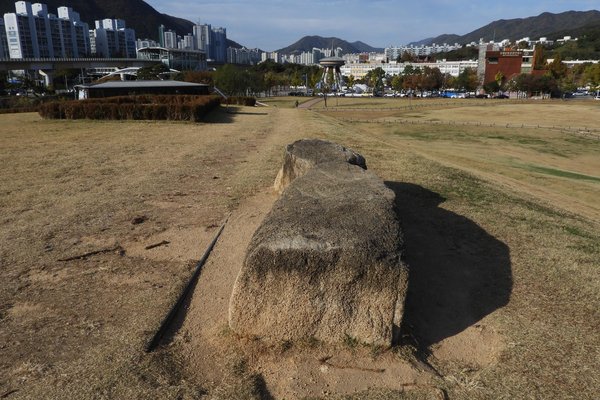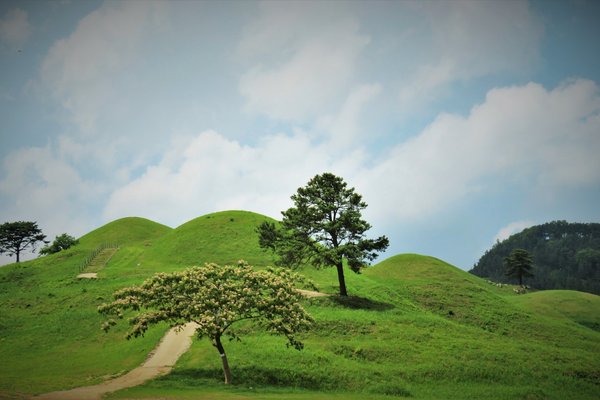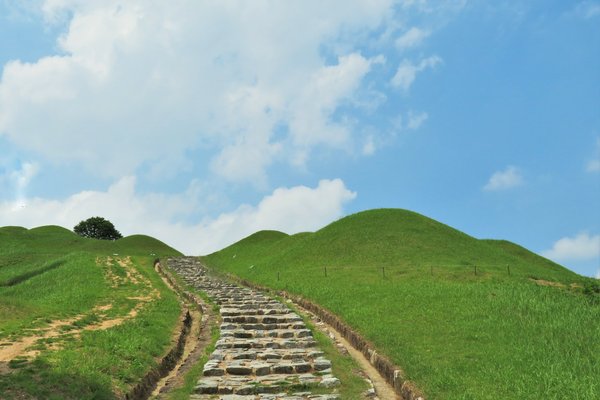Republic of Korea
Gaya Tumuli
The Gaya Tumuli are the monumental burial places of the leaders of the unique Gaya Confederacy.
Gaya existed independently for about 600 years (ending in 562) by binding together component polities with similar cultural characteristics, but never developing into a true unified state. The seven tumuli sites are located on hilltops in the southern reaches of the Korean Peninsula, each at the centre of the respective polity.
Community Perspective: Korea is starting to overdo it a bit with the Tombs WHS, although this one covers yet another cultural tradition. Two components have been reviewed so far: Goryeong Daegaya (Kyle, Frederik) and Gimhae Daeseong-dong (Zoë and GabLabCebu) in Gimhae, a satellite city of Busan.
Site Info
Official Information
- Full Name
- Gaya Tumuli (ID: 1666)
- Country
- Republic of Korea
- Status
-
Inscribed 2023
Site history
History of Gaya Tumuli
- 2023: Inscribed
- Inscribed
- 2019: Revision
- Successor to TWHS Gaya Tumuli of Gimhae - Haman & The Goryeong Jisandong Daegaya Tumuli (2013)
- Type
- Cultural
- Criteria
- iii
Links
- UNESCO
- whc.unesco.org
All Links
UNESCO.org
- whc.unesco.org — whc.unesco.org/
Community Information
- Community Category
- Secular structure: Burial
Travel Information
Yeosu Hotspot
< than 100 km to (Namwon) Yugok-ri and Durak-ri Tumuli; < than 100 km …
Recent Connections
-
Yeosu Hotspot
< than 100 km to (Namwon) Yugok-ri and …
-
Archaeological Site Reburial
"After tombs have been excavated, the p…
-
Recently discovered
"Following its discovery in 1990, subse…
Connections of Gaya Tumuli
- Trivia
-
-
Dragon
"Artifacts from the Daeseong-dong cemetery include bronze mirrors and dragon-decorated belts from China, bronze cauldrons from Manchuria, and bronze ceremonial objects from Japan." - Nomination File
-
- World Heritage Process
-
-
Derived from more than one TWHS
Successor to TWHS Gaya Tumuli of Gimhae - Haman & The Goryeong Jisandong Daegaya Tumuli (2013) -
Inscribed on a single criterion only
crit iii -
Perfect Inscriptions
2023
-
- Religion and Belief
-
-
Phoenix
"Iron swords decorated with dragon and phoenix designs and armor embellished with gold or silver from the Okjeon Tumuli are considered the best example of grave goods that conspicuously express the political identity of the Gaya ruling class. The iron swords embellished with dragon and phoenix designs and gilt-bronze helmet excavated from Tomb No. 3 are remarkably lavish in decoration." - Nomination File -
Horse Burials
"men and horses were buried alive along with the dead" (Visit Korea on Daeseong-dong)
-
- Human Activity
-
-
Human Sacrifice
Jisan-dong Tumuli “Human sacrifices are also found in these tombs for top leaders.” - Supplemental Information from State Party submitted to ICOMOS “The most prominent case of human bone research is the Lady Songhyeon project. A skeleton found during the process of excavating Tomb No. 15 at the Gyo-dong and Songhyeon-dong Tumuli was retrieved, recorded, and analyzed through collaboration among specialists from diverse disciplines. It provided valuable information on this teenage girl sacrificed at the tomb. A recreation of the girl was produced using this information and is currently being displayed at the Changnyeong Museum.” - Supplemental Information from State Party submitted to ICOMOS
-
- Constructions
-
-
Tumuli
“The introduction of new forms of tombs and the intensification of the spatial hierarchy in the tumuli sites reflect the structural changes experienced by Gaya society during its history.” - UNESCO Description
-
- WHS on Other Lists
-
-
World Biosphere Reserves
Changnyeong Biosphere Reserve (Republic of Korea) - includes Gaya Tumuli component (Changnyeong Gyo-dong and Songhyeon-dong Tumuli)See www.unesco.org
-
- Timeline
-
-
Built in the 1st century
"Gaya Tumuli is a serial property consisting of seven cemeteries created by members of the Gaya Confederacy, which developed from the 1st through the mid-6th century" (AB ev)
-
- WHS Hotspots
-
-
Yeosu Hotspot
< than 100 km to (Namwon) Yugok-ri and Durak-ri Tumuli; < than 100 km to (Goseong) Songhak-dong Tumuli
-
- Science and Technology
-
-
Recently discovered
"Following its discovery in 1990, subsequent excavations at the Daeseong-dong Tumuli brought to light its historical importance. The cemetery was designated a Historic Site in 1991 and its surrounding areas were developed as a public park." - Nomination File -
Archaeological potential
Gyo-dong and Songhyeon-dong Tumuli "There are 115 mounded tombs at the cemetery, but it is assumed that there are many more graves with only underground facilities and that have not been discovered." - Nomination File
-
- Visiting conditions
-
-
Archaeological Site Reburial
"After tombs have been excavated, the pit is backfilled using the soil and stones removed from it. Mounds are rebuilt over the burial to the height and circumference of the original construction, as confirmed by the archaeological research. Grass is planted over the burial mound and in the surrounding areas to prevent soil erosion." (AB ev)
-
News
No news.
Recent Visitors
Visitors of Gaya Tumuli
- Alexander Lehmann
- Alexander Parsons
- anthonybonbon
- Bernard Joseph Esposo Guerrero
- bossc
- Bram de Bruin
- chenboada
- Christravelblog
- CugelVance
- cutecid
- cwthong
- Dimitar Krastev
- Els Slots
- Errol Neo
- Eva Kisgyorgy
- Fan Yibo
- Frederik Dawson
- GabLabCebu
- Hadrianus
- Harry Mitsidis
- Hdwilsonau
- henrik_hannfors
- inomusay
- Javier
- JL
- Joel on the Road
- Kim, Soo-youn
- Kristin
- Kyle Magnuson
- Luboang
- Luke LOU
- Maciej Gil
- Michael Ayers
- Michael Turtle
- Mihai Dascalu
- nan
- Patrik
- Paul Schofield
- Pchxiao
- Philipp Peterer
- Roman Bruehwiler
- Shandos Cleaver
- Simonh
- Slavi
- Solivagant
- tony0001
- Xiquinho Silva
- Zoë Sheng
- Zos M
Community Reviews
Show full reviews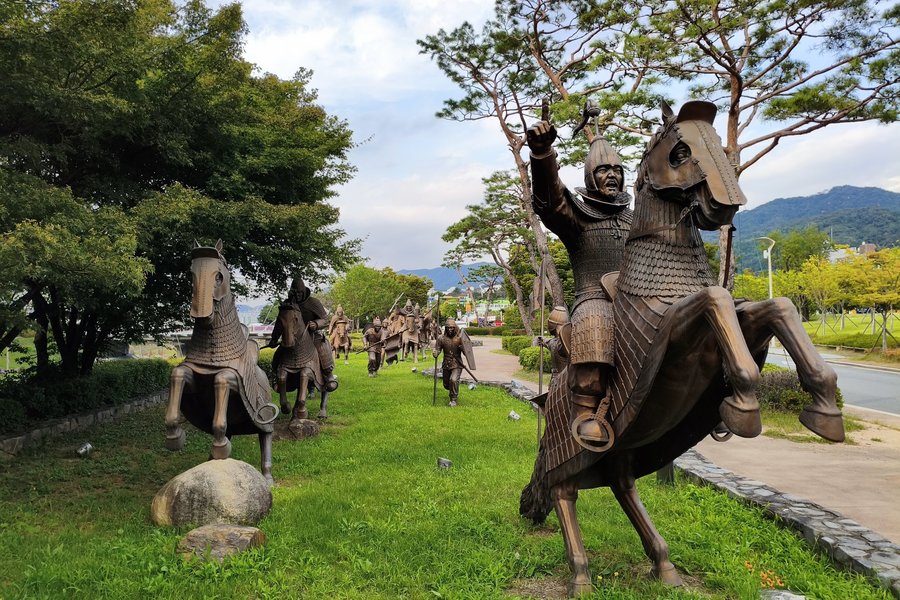
Time of the visit: the 30th of sept.,2025
I arrived at Gimhoe's light railway station" King Soro" from where I immediately went to the Royal tomb of king Soro.
I had expected a small tomb, but instead I found a whole complex of different buildings as well as two larger dolmens in the precinct.
The area consists of the tumulus,newly built buildings like the "Sung-an shrine" which houses the ancestral tablets of 8 kings and queens,older buildings like the ""Sungseon shrine"which keeps the ancestral tablets of the King Soro and Queen Heo or the "Anhyang-gak," which served as a temporary storage facility for candles and incense. There are probably around 15 buildings. One of these buildings houses various artifacts, another serves as an information center with a film screening (fairly insignificant).
Afterwards, I went to the tumuli in the so-called Daeseong-dong. On the way there, I passed the "Hanok Experience," which I briefly entered to take some photos of the hotel's beautiful traditional houses. I also passed the Gimhoe Folk Museum, which I briefly visited (free admission).
I climbed Aeguji Hill (Daeseong-dong tumuli) and walked from one information board to the next (all in Korean and English) until I came across a small exhibition hall containing two excavated tombs, realistically showing the burial methods and burial goods for members of the ruling class.
Then I went inside to the Archaeological Museum, which only deals with the local member of the Gaya confederacy in contrast to the National Museum, where the …
Keep reading 0 comments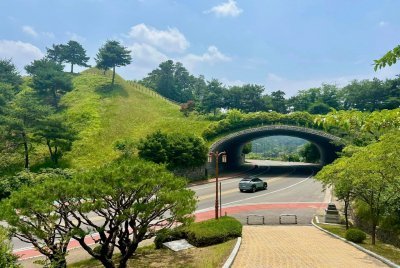
After I visited Oksan Seowon and on my way to see Dodong Seowon, adding Goryeong as a detour for Gaya Tumuli seem to be a compulsory for World Heritage Site enthusiasts despite uncertainty that the nomination will be accepted or not. I reached Daegaya Museum on lunch time, the first thing I saw apart from modern museum building and some drivers had lunch around the empty carpark, was the impressive view of many tumuli on the hills surrounding the museum complex. The location of Tumuli on the high hills was really different from those Silla Tumuli I saw in Gyeongju but quite similar to the Baekje one I saw in Gongju, but the numbers of Tumuli on the hill here was already impressive. The museum staffs were energetic by giving me all English information documents they had and helped me get a ticket from ticket machine, they were really afraid that foreign credit card may not be accepted.
The highlight of the museum in my opinion was the tumuli replica that display the layout and burial ritual of noble Gaya. The tomb construction and layout were different from Silla and Baekje or even much later Joseon, and the ritual had many human sacrificing. In my opinion with only these two elements, Gaya Tumuli maybe the most interesting one in South Korea. After the museum I went to another building that built to cover the excavated Tumuli, inside I saw the real version of what I earlier saw in the …
Keep reading 1 comment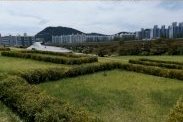
Daesong-dong Gobungun (+ surprise Jisan-dong Gobungun drive-by), June 2023
With an already packed Korea trip, I carelessly dismissed most Gaya Tumuli sites as too inaccessible to squeeze into the itinerary; reading through the (two) reviews on this website, I decided that Daesong-dong was easily my best bet to check this site and see the Gaya remains for myself. Daesong-dong is located in the center of Gimhae, a satellite city of Busan and connected by metro (a very scenic light rail line, to be specific!), the closest stop being Gimhae National Museum. This turned out to be about 1.5 hours one-way transit from Busan Train Station. Gimhae seems to be extremely proud of their Gaya heritage, as the center of the Geumgwan Gaya, among the most influential of the Gaya Confederacy. One can actually see the huge mound as the train approaches the station, probably a casual visitor's best spot for a bird's eye view of the site. Then, you can just cross the street, and voila, you've arrived! Honestly, the most interesting in situ remains were exposed excavations laden with pottery and other artifacts, which you can peer at from the balcony of the building on the side of the mound. Other than that, one can see short rectangular hedges, tombs where excavations had already taken place, scattered all throughout the site, along with a couple dolmens and one tomb with rocks. In fact, what I (and I suppose many others) had assumed to be a huge mound was …
Keep reading 1 comment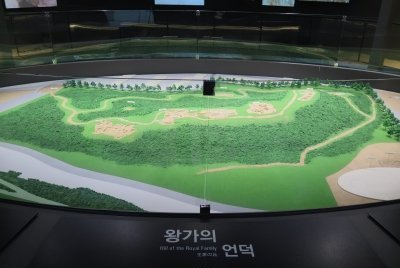
For this location I picked the Gimhae Daeseong-dong Tumuli due to easier map location, with Gimhae also being a rather large town instead of what appears to be in the middle of nowhere to find the other Haman Malisan Tumuli. Parking is just next to the large museum and the museum is entirely free! There is an information desk but the guy didn't speak anything but Korean so I just went ahead inside. The signs are available in Korean and English and are in great detail. I found out much more than expected. They also call this site as being "temporarily" listed as UNESCO rather than tentatively...interesting!
Once you go through the museum you can freely walk on top of the actual tumuli, a large burial mound and reminiscent of the Viking ones in Scandinavia. At the start is a burial chamber you can look inside with a few signs but overall it is just a walk to stretch your legs, making that small ascend for a higher overview of the site, and then making your way down towards the parking lot if you are done here.
Whereas the site is surely important for Korean history I'm not sure what they expect to see as unique value to the rest of the world.
Keep reading 0 comments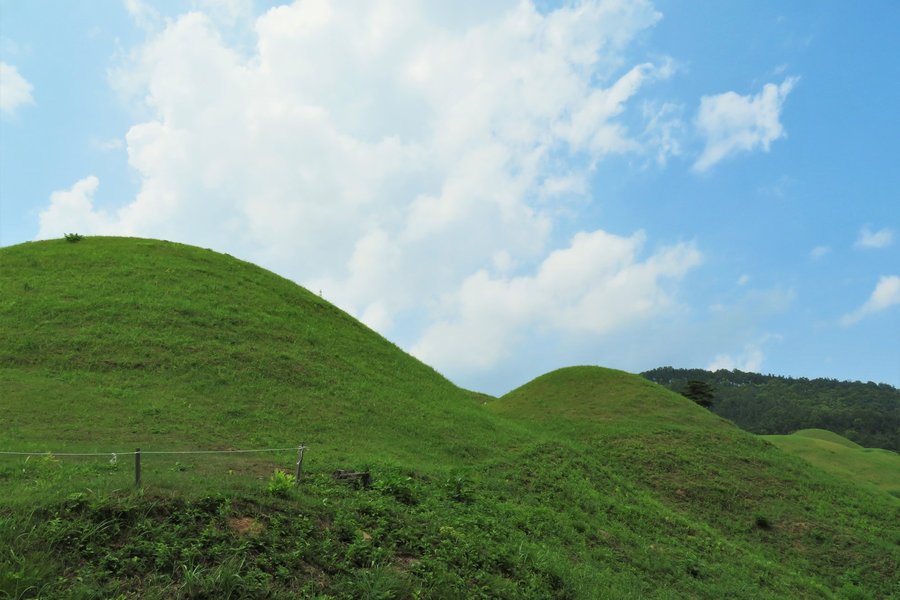
So far 704 tombs have been identified at Jisan-dong, dates range from 400 - 562 CE. The Gaya Confederacy was located between Baekje and Silla, and ultimately annexed by the later during the 6th century. Important elements of these tombs are its connection to human sacrifice, the largest evidence yet found in any single tomb site in Korea. In addition, there are numerous artifacts that originate from China, Japan, and the Okinawan islands. In fact, one tomb even contained Roman glass!
During my visit to the numerous tumuli (tombs literally cover the hillsides), the Daegaya museum, and the Tomb 44 exhibition hall, I learned quite a lot about this ancient culture. Both similar, yet different from Silla and Baekje, I was surprised by the tremendous artifacts being unearthed just in the last couple years.
Being in late June, the heat and humidity while climbing the steep trail to view the tombs was really a workout. The location is spectacular in both its view, but also the recognition of how many tombs there are here. Keep in mind Goryeong is not too far from Haeinsa Temple, Dodong Seowon, Upo Wetland, and another Gaya site Changnyeong Tumuli. So if you are driving, it might prove to be an excellent region of Korea to explore.
There is an interesting history connected to these tombs. Japan between the 1910's to 1940's spent significant resources in conducting archeological digs in Goryeong. Their purpose was to find evidence of a link between the Gaya Confederacy and …
Keep reading 0 comments
